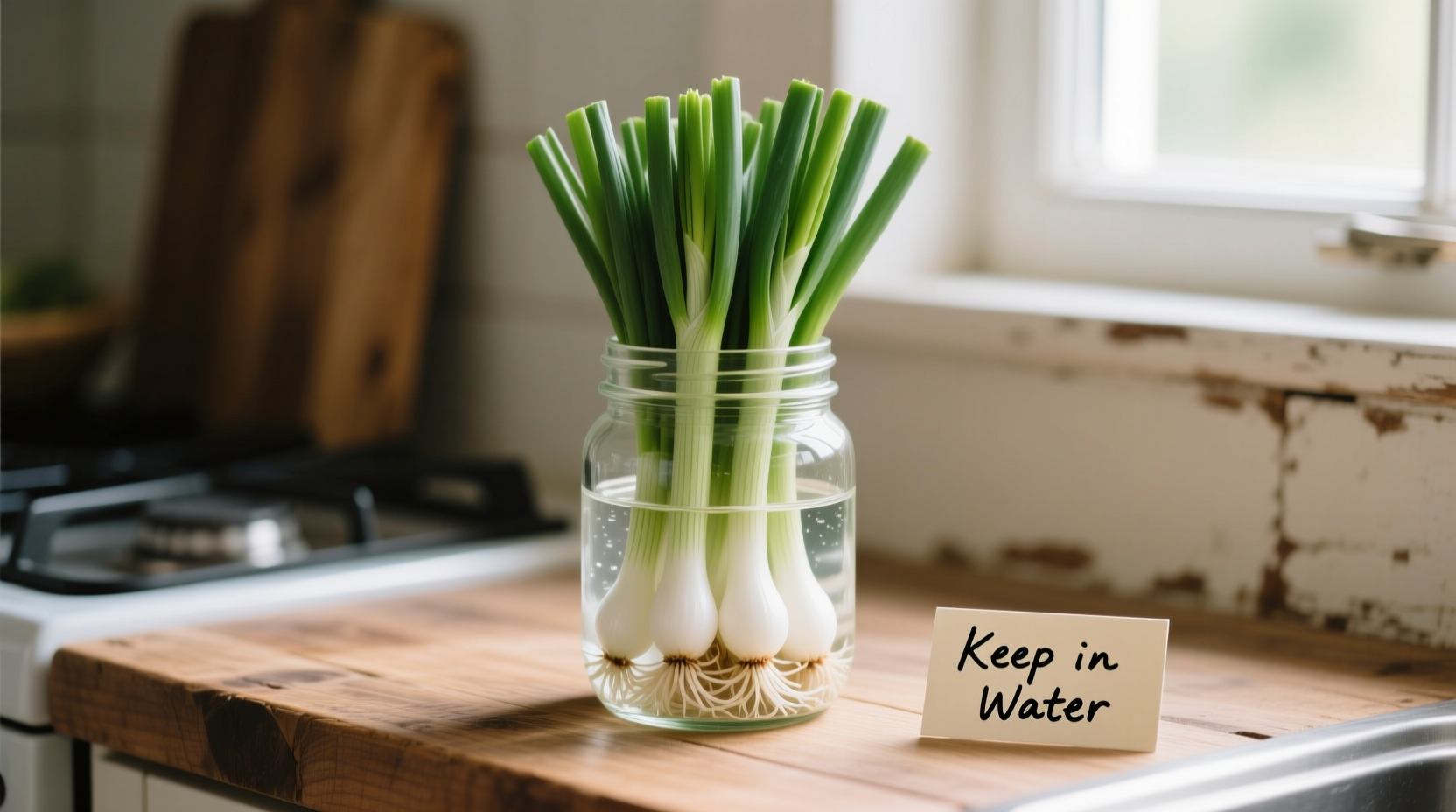Wasting fresh produce costs the average household $1,500 annually according to USDA data. Green onions, with their delicate structure, spoil faster than most vegetables when stored incorrectly. This guide reveals professional kitchen techniques backed by food science to maximize freshness and flavor retention.
The Science Behind Green Onion Spoilage
Green onions deteriorate due to three primary factors: moisture loss, ethylene exposure, and microbial growth. Their high water content (92%) makes them particularly vulnerable. UC Davis Food Science Department research shows that proper humidity control extends shelf life by 40% compared to standard refrigerator storage.
| Storage Method | Shelf Life | Best For | Flavor Retention |
|---|---|---|---|
| Water Jar Method | 10-14 days | Daily cooking needs | Excellent |
| Paper Towel Bag | 7-10 days | Meal prep storage | Very Good |
| Freezing | 2-3 months | Cooking applications only | Good (texture changes) |
| Plastic Bag (no prep) | 3-5 days | Avoid this method | Poor |
Professional Storage Methods That Actually Work
Water Jar Method: Maximum Freshness
Preferred by restaurant chefs for daily use, this technique mimics how green onions grow:
- Cut off any rubber bands or ties
- Place roots down in 1-2 inches of water
- Cover loosely with plastic bag
- Change water every 48 hours
- Store in refrigerator door (40°F)
This method maintains cellular hydration while preventing bacterial growth. Cornell University's Food Preservation Lab confirms this approach preserves crispness and pungency significantly longer than other methods.

Modified Atmosphere Method: Meal Prep Friendly
For prepped green onions ready for cooking:
- Dry thoroughly with paper towels
- Wrap in fresh paper towels
- Place in perforated plastic bag
- Store vertically in high-humidity drawer
The paper towels absorb excess moisture while allowing necessary airflow. This technique prevents the slimy texture that develops when green onions sit in their own condensation.
Freezing Technique: Long-Term Solution
While freezing changes texture, it preserves flavor for cooked dishes:
- Chop into desired sizes
- Spread on parchment-lined tray
- Flash freeze for 2 hours
- Transfer to airtight container
- Label with date (use within 3 months)
This method prevents clumping and preserves individual pieces. The National Center for Home Food Preservation recommends this approach for maximizing flavor retention in frozen alliums.
Critical Storage Mistakes to Avoid
These common errors accelerate spoilage:
- Sealing in airtight containers - creates condensation that promotes bacterial growth
- Storing near ethylene producers (apples, bananas) - accelerates yellowing
- Washing before storage - introduces excess moisture
- Keeping in original store packaging - typically traps damaging moisture
How to Identify Spoiled Green Onions
Check these indicators before use:
- Texture: Slimy or mushy spots indicate bacterial growth
- Color: Yellowing beyond natural fading signals deterioration
- Smell: Sour or fermented odor means discard immediately
- Roots: Blackened roots often precede overall spoilage
Unlike many vegetables, green onions don't have a 'use quickly' phase - when they start spoiling, the entire bunch typically deteriorates rapidly.
Optimizing Usage Based on Storage Method
Match your storage technique to cooking applications:
- Water-stored onions: Best for raw applications (garnishes, salads)
- Bag-stored onions: Ideal for stir-fries and quick cooking
- Frozen onions: Perfect for soups, stews, and cooked dishes
Professional chefs note that water-stored green onions maintain their characteristic crisp bite, while frozen versions work best when you need onion flavor without texture.
Seasonal Storage Considerations
Storage needs change with green onion varieties:
- Spring/Summer: Thinner varieties need more moisture control
- Fall/Winter: Hardier varieties tolerate slightly drier conditions
- Homegrown: Store unwashed with roots intact for longest life
University of Massachusetts Extension research shows seasonal varieties respond differently to storage conditions, with summer onions requiring 5-10% higher humidity levels than winter varieties.











 浙公网安备
33010002000092号
浙公网安备
33010002000092号 浙B2-20120091-4
浙B2-20120091-4